Digital Camera World Verdict
The first-ever 3D camera with its own viewer proves more than mere novelty, with bags of resolution and a high frame rate, though ponderous user interface. However, aside from vloggers creating 3D photos and videos for VR headsets there are few ways to easily share its stereoscopic creations.
Pros
- +
Viewer attaches magnetically
- +
Excellent build quality
- +
High frame rate for 3D (60 fps)
- +
Fixed focus avoids discomfort
- +
Replaceable battery
Cons
- -
Sharing options are limited
- -
No raw capture for 3D photos
- -
Battery lasts for an hour
- -
Slow user interface
- -
Too easy to blur 3D content
Why you can trust Digital Camera World
Do you need a compact 3D camera? While 360º cameras have mushroomed in popularity as a new kind of action camera, 3D hasn’t been so popular. In fact, aside from the Vuze XR and the Insta360 Evo the third-dimension has played second fiddle when it comes to the two-lenses-are-better-than-one brigade.
Cue the Kandao Qoocam EGO 3D camera, a brave attempt at popularizing the flagging format that comes with bags of resolution, some deliciously high frame rates and even a a 3D viewer that magnetically attaches to the back. Is it for vloggers to create 3D videos for VR headsets like the Oculus Quest 2? For families happy with an all-in-one 3D shoot-and-see solution? Or can its creations also be shared widely across social media? Here’s what you need to know about the Qoocam EGO…
Kandao QooCam EGO specifications
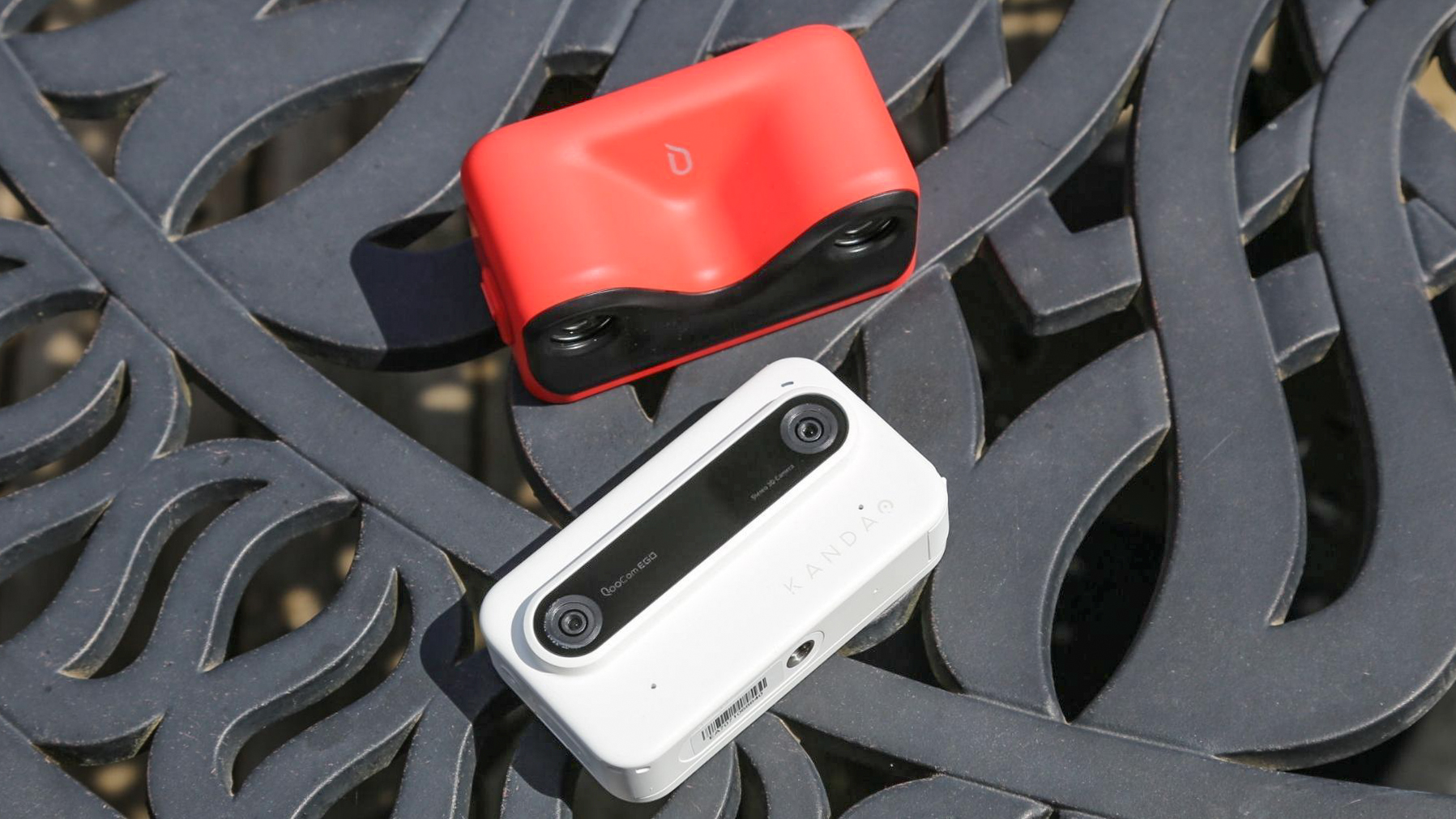
Aperture: f/1.8
35mm equiv. focal length: 27mm
Photo resolution: 8000x3000
Video resolution: 3840x1080@60fps
Weight: 160g (camera), 115g (viewer)
Dimensions: 94x53x22mm (camera), 97x53x48mm (viewer)
Run time: 1 hour
Key features
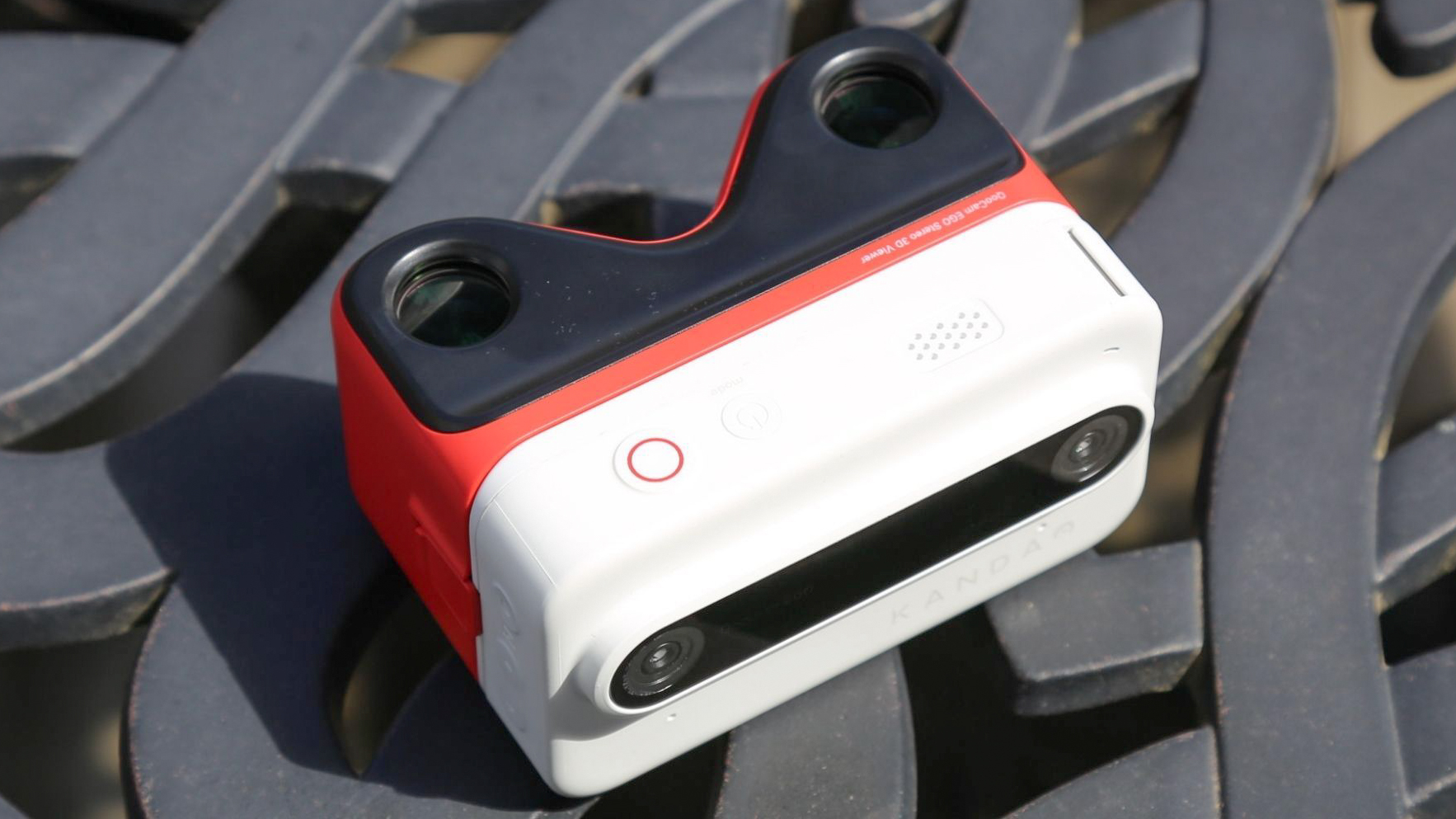
Forget 360º and embrace stereoscopic 180º. That’s the message behind the design of the Qoocam EGO, whose camera has two fixed focus f1.8 lenses, each with a 66º field of view and backed by 1/2-inch sensors. They record 3D side-by-side photos in 8000x3000 pixels (24 megapixels) as JPG files and 3D side-by-side widescreen 16:9 videos in 3840x1080 pixels (4.1 megapixels, but more importantly 1920x1080 full HD for each eye) and in 60 frames per second (fps) as H.264 files with a bitrate of 7.5MB/sec. That’s more detail than the majority of 360 consumer cameras, and for 3D video that’s a lot of fps. The camera also boasts a dual-channel stereo microphone and captures in AAC, but there’s no external microphone option, which will put a lot of vloggers off.
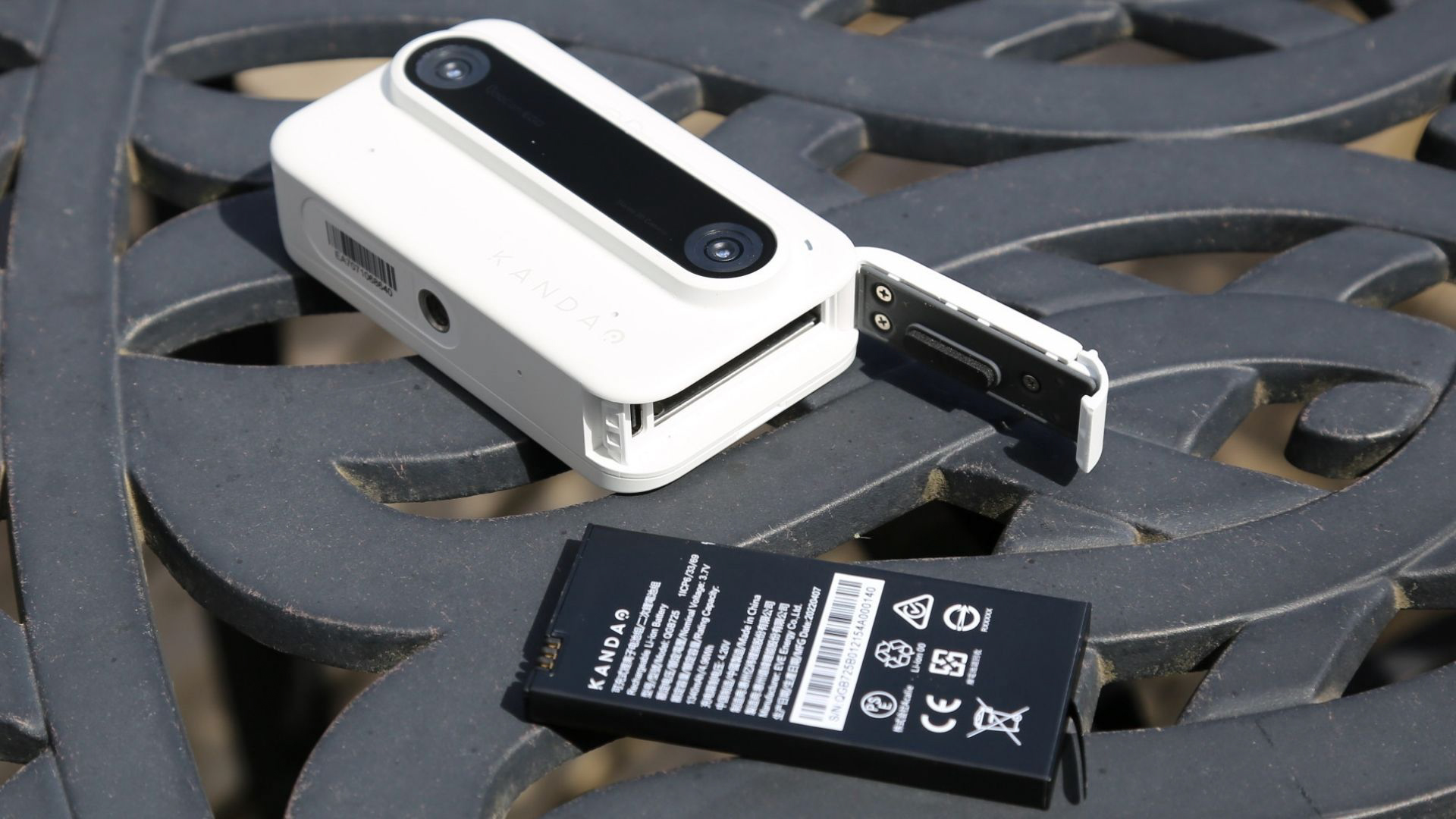
A rather attractive feature on the Qoocam EGO is a removable battery. It’s rated at 1,340mAh and lasts about an hour, but the fact that you can keep a couple of spare in your pocket – or recharge it from a portable battery – makes it more of a serious photography product.
It’s a shame exposure is fixed (aside from some limited compensation), but the focus needs to be manually (and constantly) changed. There are six focus options, with a clear figure on the screen for how many centimetres your subject should be from the camera to be in focus. That’s helpful, but in practice it badly needs an autofocus option. It is possible to change the shutter speed, though only slightly; ‘sport’ mode gives you a choice of 1/125 and 1/1250. There’s also a self-timer of up to five seconds.
Build and handling
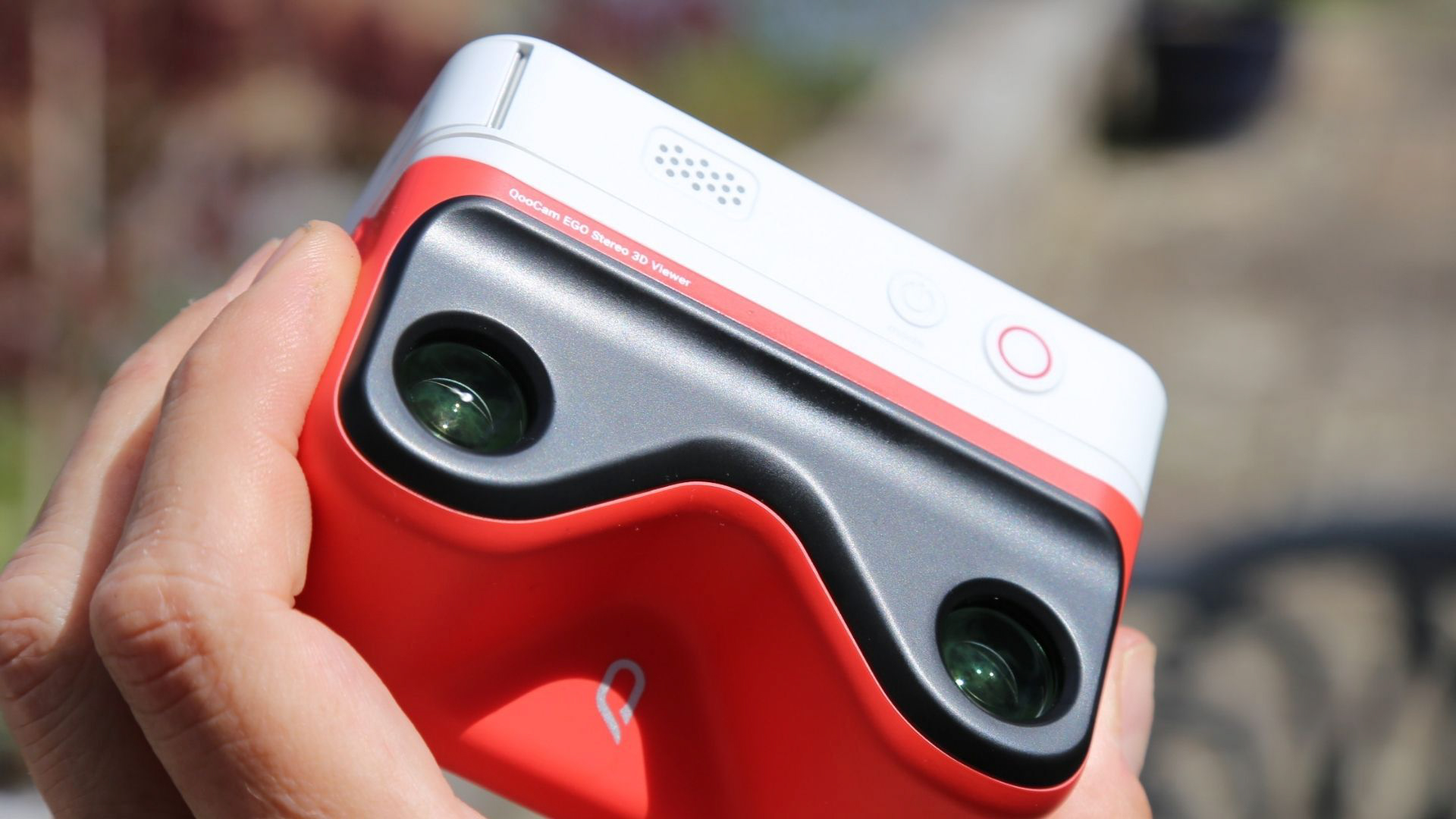
The Qoocam EGO is impressively designed, but it has a slow user interface. Measuring 94x53x22mm and weighing 160g, the main camera unit – available in both black and white – feels solid in the hand. The 2.54-inch touchscreen (1600x1440 pixels, 2.3 megapixels) dominates the rear of the product and proved responsive during our review. On one side is a battery compartment, which houses the battery and a microSD card of up to 256GB capacity. There’s no onboard storage on the Qoocam EGO (it doesn’t actually work at all without a microSD card installed). On the bottom is a standard 1/4-20 tripod thread.
The red viewer, which measures 97x53x48mm and weighs 115g, is equally as well designed. It attaches to the rear of the camera using magnets and clips. When you watch your 3D photos and videos back the viewer gives you 37 pixels per degree (PPD), which is pretty good for 3D. It’s more than that achieved by the Oculus Quest 2, which boasts just under 20 PPD.
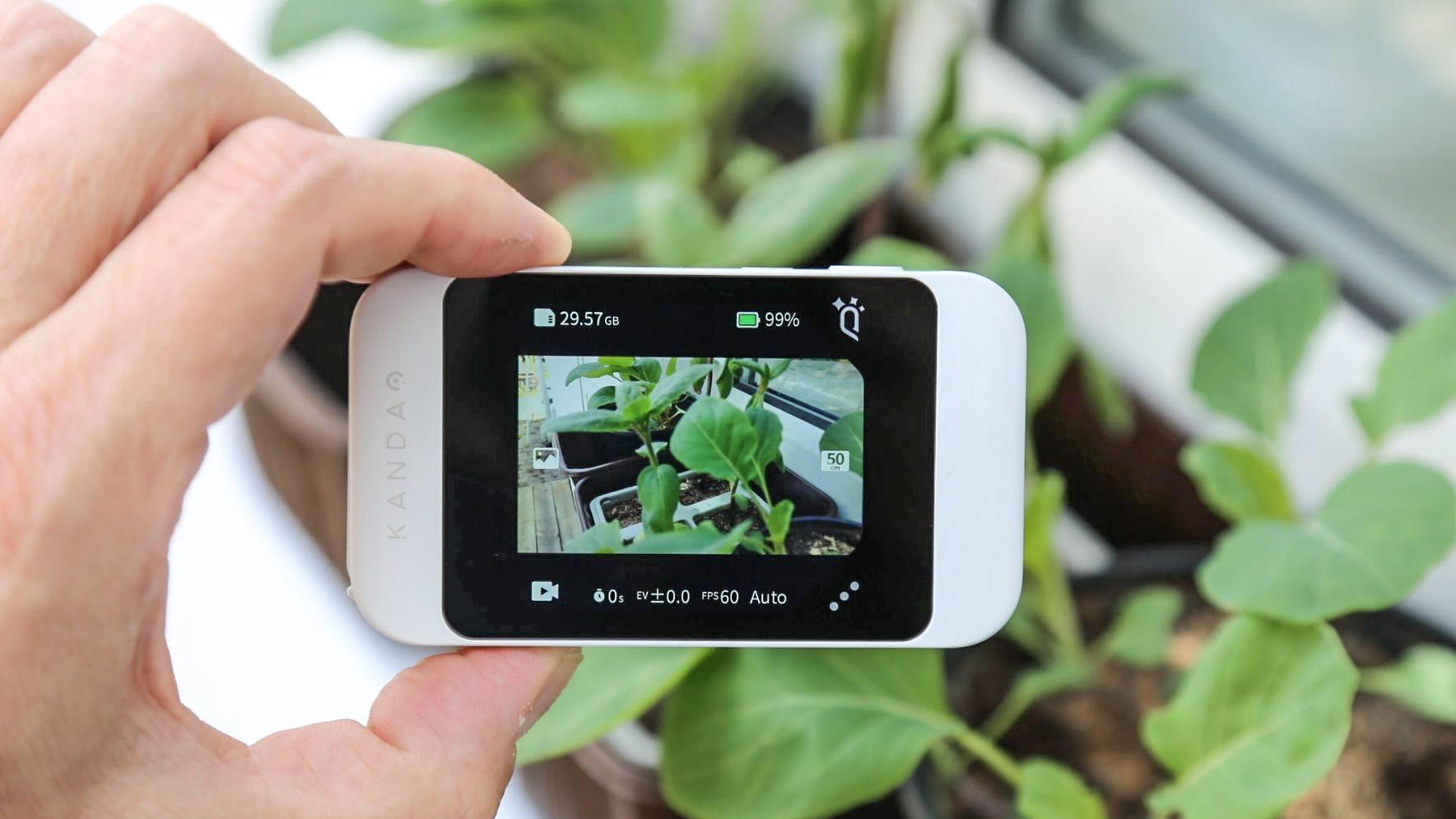
The camera is easy to use; you just tweak the focus and shoot while remembering to keep your subject(s) the same distance from the camera at all times (if you don’t you’ll get a blurry image). After you’re done you can attach the viewer and watch it back. However, it’s slow going. Switching between 3D photo and 3D video mode takes about four seconds. Doing anything takes about four seconds. This is not a good camera for spontaneous moments.
For editing you need the Qoocam app, which allows basic edits and also supplies a few templates and novelty after-effects (it also works as a remote trigger if you have the camera on a tripod). For viewing you can physically transfer the microSD card to a VR headset (which some have) for viewing (as 3D footage, not as tracked VR content), and upload 3D videos to YouTube, though they do get horribly compressed. Or you can extract the files from the microSD card and edit them on a computer.
We found it a pain to link the app to the camera largely because you need to scroll through its settings and attach it to a smartphone’s hotspot rather than simply attaching your smartphone to the camera’s WiFi network.
Performance
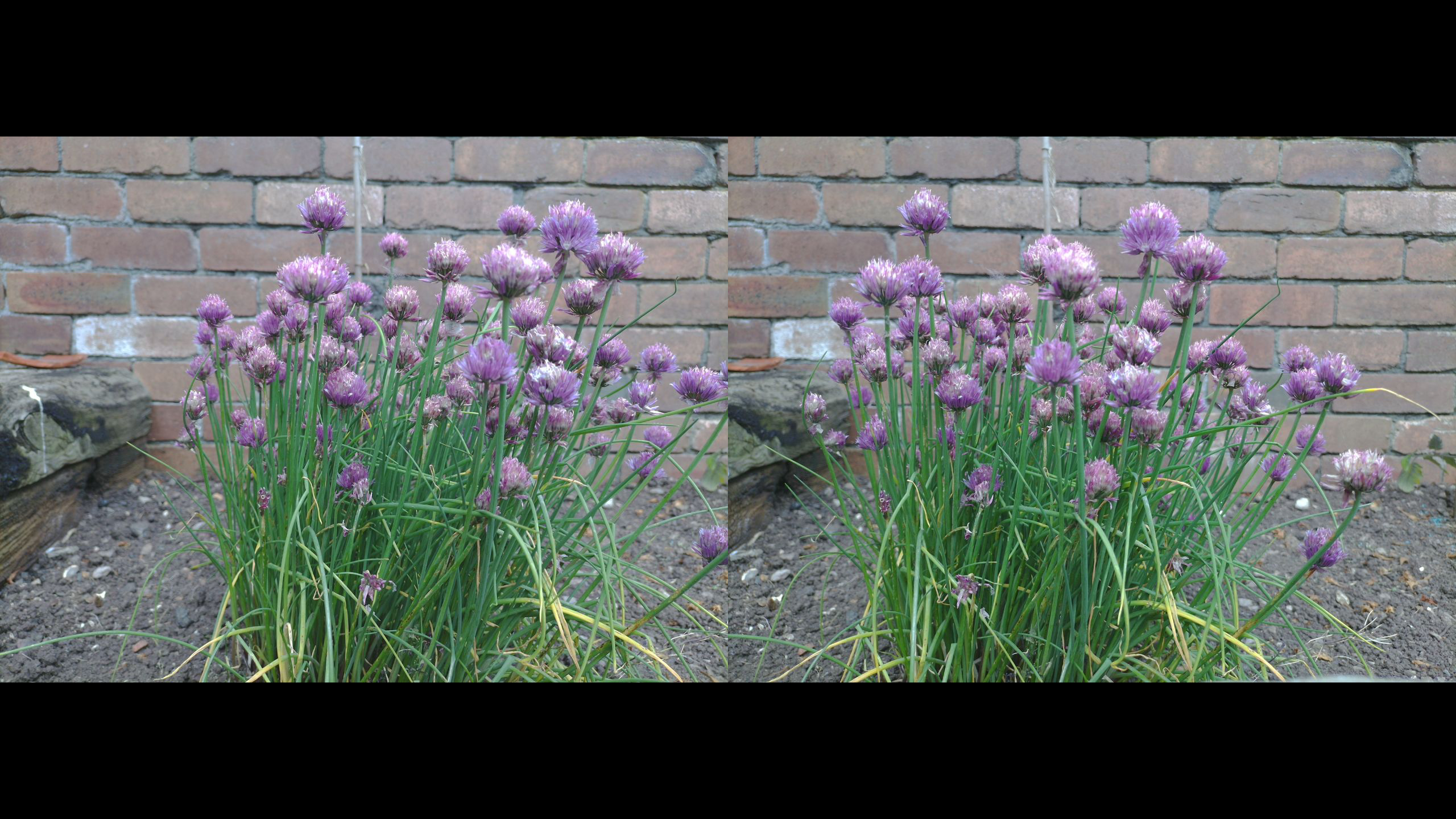
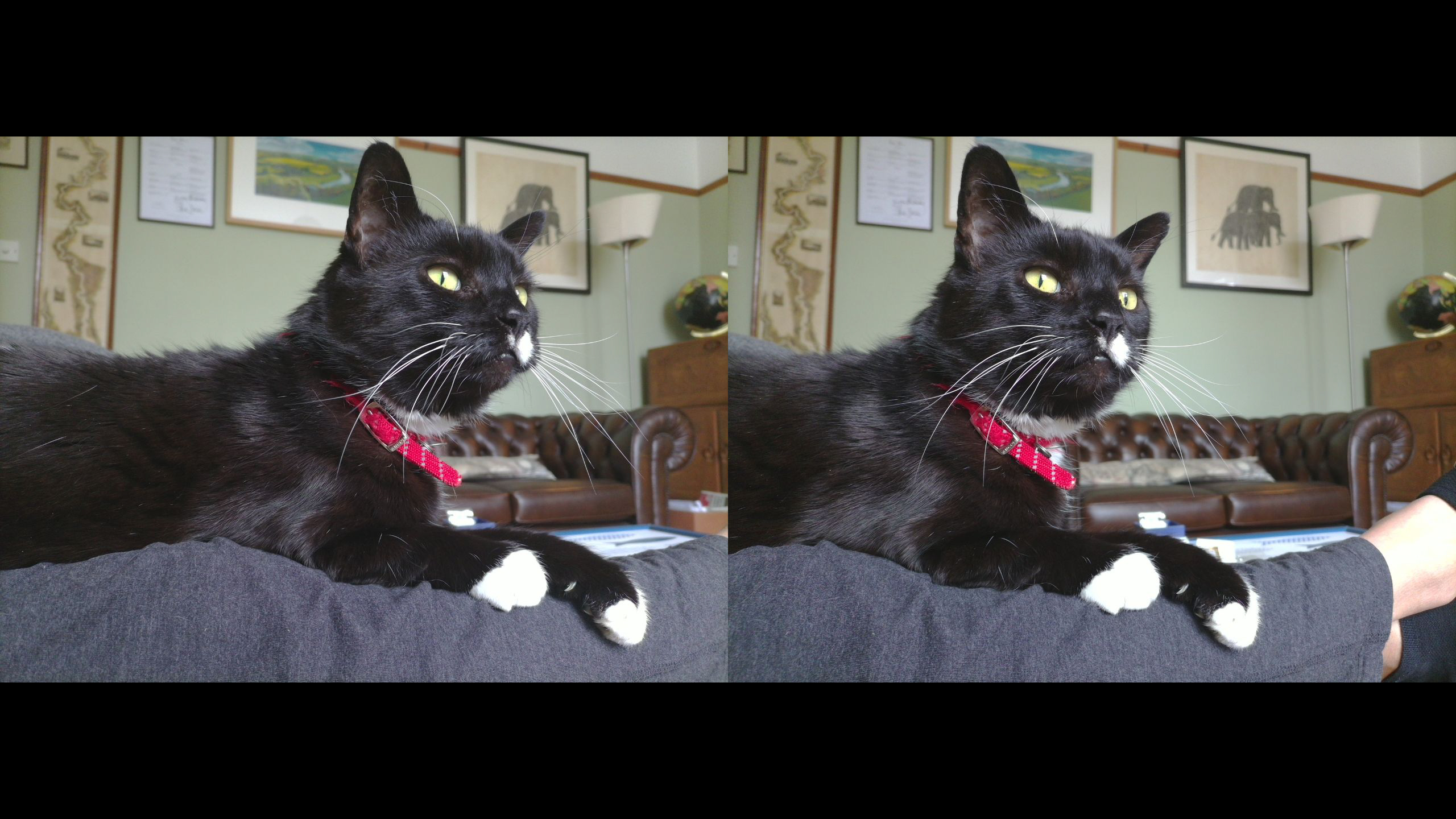
The Qoocam EGO takes excellent 3D photos and widescreen video that look authentic and accurate. It is, after all, using two lenses – this is not fake 3D. In terms of sharpness and resolution they're more impressive than most 360º cameras including high-end options like the Ricoh Theta X, Insta360 One X2 and GoPro Max.
The only caveats are that the videos are relatively low bitrate and that you do have to fiddle with the focus. That has consequences if you’re going to be shooting a lot of scenes with different depths. It’s good to have control over focus, but you have to become completely obsessed with it while shooting. The best way to do that is to choose a scene to record, adjust the focus, then check it by attaching the red viewer to show you a live view of the 3D effect. It’s a painstaking process, but at least you can see exactly what your video is going to look like and, most importantly, whether you’re too close or too far from objects.
Playback is easy if it’s only you that wants to view it. You simply take the red viewer and let it magnetically attach to the camera’s touchscreen. The magnets are there to guide you in rather than firmly grip the viewer; it’s the clips on the side of the viewer that actually keep it in place. You then simply look through the viewer to see your creations in 3D.
The point of the Qoocam EGO’s viewer boasting 37 PPD is to create a more immersive experience and avoid the ‘screen door effect’ where the pixel grid is visible while viewing. You don’t get that while using the viewer, through which the 3D footage looks excellent; vibrantly colored, highly detailed, clean and comfortable to watch. However, it would be nice if the 3D video could be captured in a higher bitrate and 3D photos in a raw format for easier post-processing.
Video samples shot with the Kandao QooCam EGO
Kandao QooCam EGO: Verdict
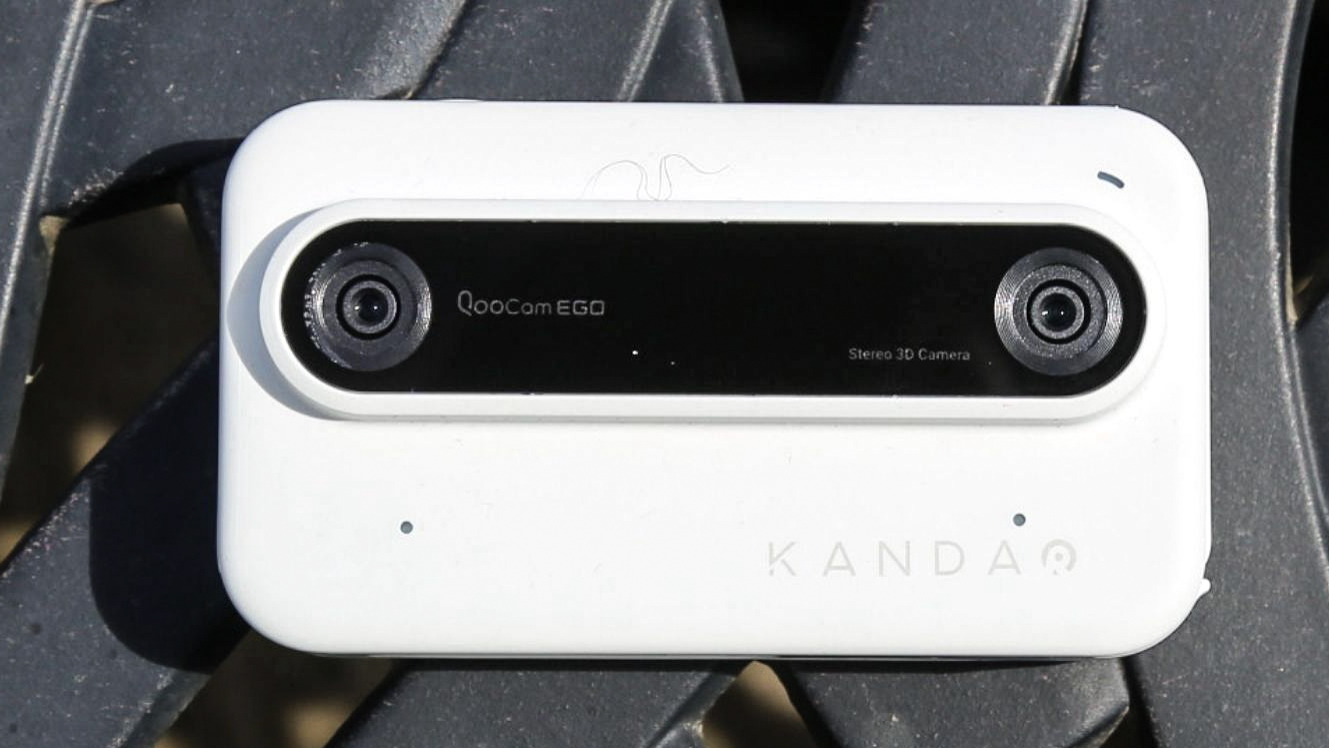
We live in a 3D world, but until the metaverse and/or VR properly takes hold we’re stuck with 2D social media. Superbly designed and with an excellent build quality, the Qoocam EGO has a slow user interface and requires the user to become obsessed with focus, but it’s capable of producing fine-looking 3D photos and video. We’re just not sure what to do with them.
Read more
Best 360 cameras
Best action cameras
Best VR headsets

Jamie has been writing about photography, astronomy, astro-tourism and astrophotography for over 15 years, producing content for Forbes, Space.com, Live Science, Techradar, T3, BBC Wildlife, Science Focus, Sky & Telescope, BBC Sky At Night, South China Morning Post, The Guardian, The Telegraph and Travel+Leisure.
As the editor for When Is The Next Eclipse, he has a wealth of experience, expertise and enthusiasm for astrophotography, from capturing the moon and meteor showers to solar and lunar eclipses.
He also brings a great deal of knowledge on action cameras, 360 cameras, AI cameras, camera backpacks, telescopes, gimbals, tripods and all manner of photography equipment.



